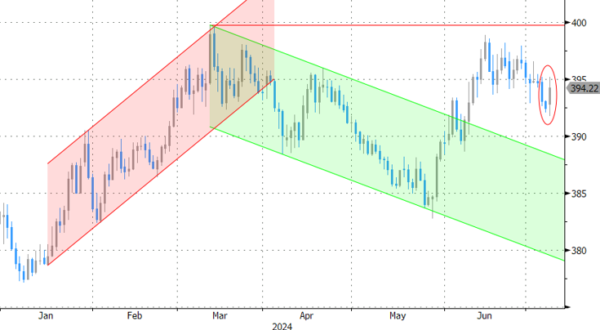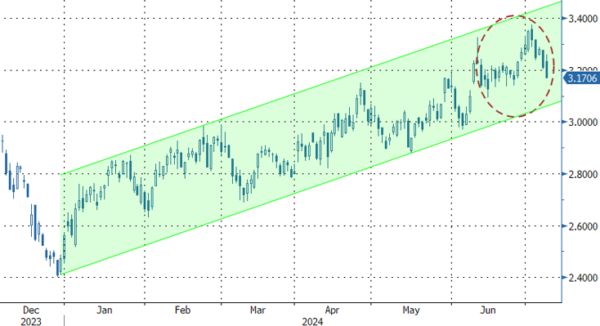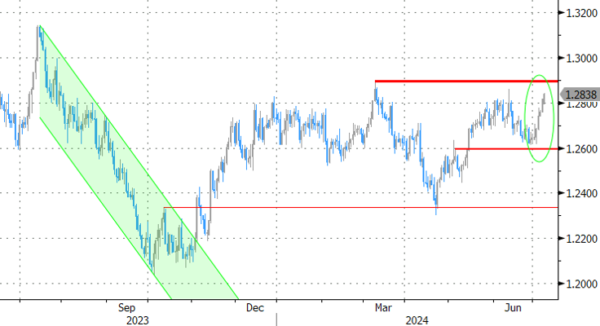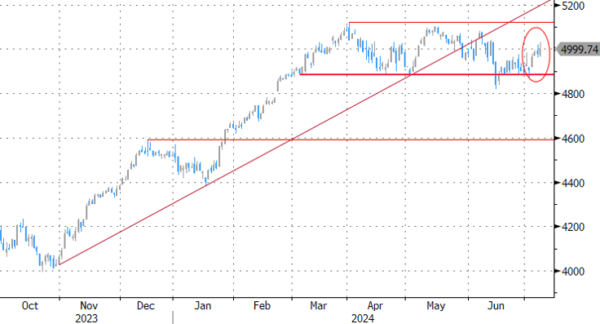Markets
Yesterday’s second round in the French parliamentary elections resulted in a hung parliament, be it in a totally different setup than polls suggested. Le Pen’s Rassemblement National (RN) unexpectedly finished third, securing 143 seats. Macron’s centrists (159) and the leftist front (NFP, 180) ended second and first respectively. The outcome initially triggered some OAT underperformance. We’d tie that to an overall increased risk of additional government spending. Markets were indeed positioned for a political gridlock, but one with the RN as the biggest party possibly delivering the new prime minister. That’s important as RN had previously reassured markets and businesses to more or less abide by the European budget rules. The Mélenchon-led NFP’s high-tax, high-spending manifesto couldn’t be more different. Anyway, it quickly dawned that any NFP-led coalition government seems unlikely in the short (or even medium) run. Chances are president Macron will install a caretaker PM until new elections can be called in one year from now. With both extremes unable to seize power, the political event risk in Europe is gone for the time being. French yields drop between 1 and 4 bps with the downleg extending in early US dealings. German rates add
News & Views
The People’s Bank of China today announced that it will start conducting new bond repurchases and reverse repo operations as it aims to make open market operations more efficient and at the same ensuring sufficient liquidity in the banking system. De facto, the bond operations will be conducted at the end of the day on an ad hoc basis as needed. The transactions will be on an overnight maturity and rates will be set at 20 bps below and 50 bps above the seven day repo rate. The PBOC didn’t give any indication on the frequency of the new operations. The new framework also is seen as an indication that the 7-day repo rate is becoming an ever important reference from PBOC policy (de facto main policy rate).
Industrial production in the Czech Republic declined 2.2% M/M in real terms in May, Czech Statistical Office (CSO) data showed today. Production was 3.2% lower Y/Y. CSO commented that ‘The decrease of industrial production in May was influenced the most by manufacture of motor vehicles, trailers and semi-trailers, in which this year’s, for the time being, weakest month met with a higher comparison basis’. Manufacturing production overall declined by 4.0% Y/Y. On the positive side production of food products (4.4%), beverages (8.4%) and electricity and gas production (7.0%) even as the latter was mainly due to a lower comparison base. Aside from the production data, CSO reported new orders to have increased 0.8% Y/Y in May, with the dynamics applying both to non-domestic and domestic orders. The average number of employees in industry decreased by 2.0% Y/Y in May. A separate report also showed further contraction in the Czech construction sector. Construction output decreased 5.1% M/M to be 6.8% lower Y/Y. The approximate value of permitted constructions decreased by 9.2%. The number of started dwellings dropped 18.2% Y/Y. The number of completed dwellings decreased by 2.1% Y/Y. The Czech koruna eased slightly today with EUR/CZK trading near 25.16.
Graphs
EUR/HUF: forint underperforms regional peers as government floats new and/or increased “special taxes” to plug the budget deficit

French 10-yr yield drops to lowest level since end-June as second round prevents extremes from seizing power

GBP/USD: resilient sterling on track for strongest close since mid-March

EuroStoxx50 test 5k barrier against mildly constructive background










